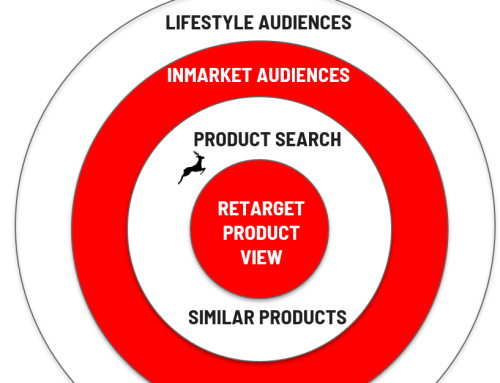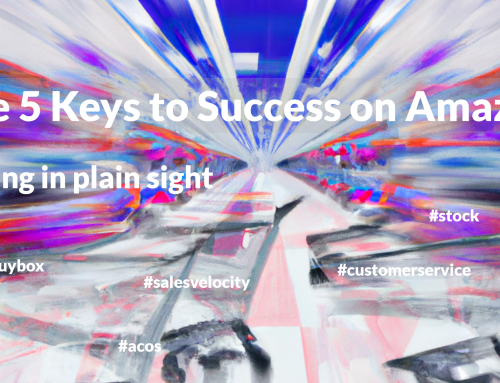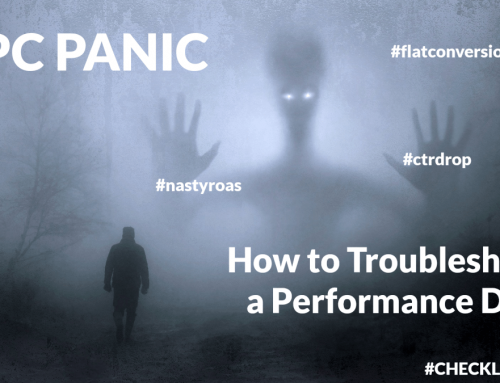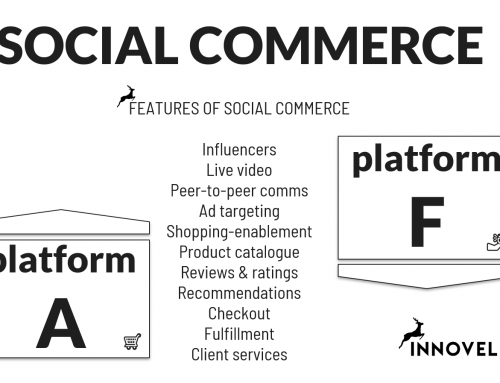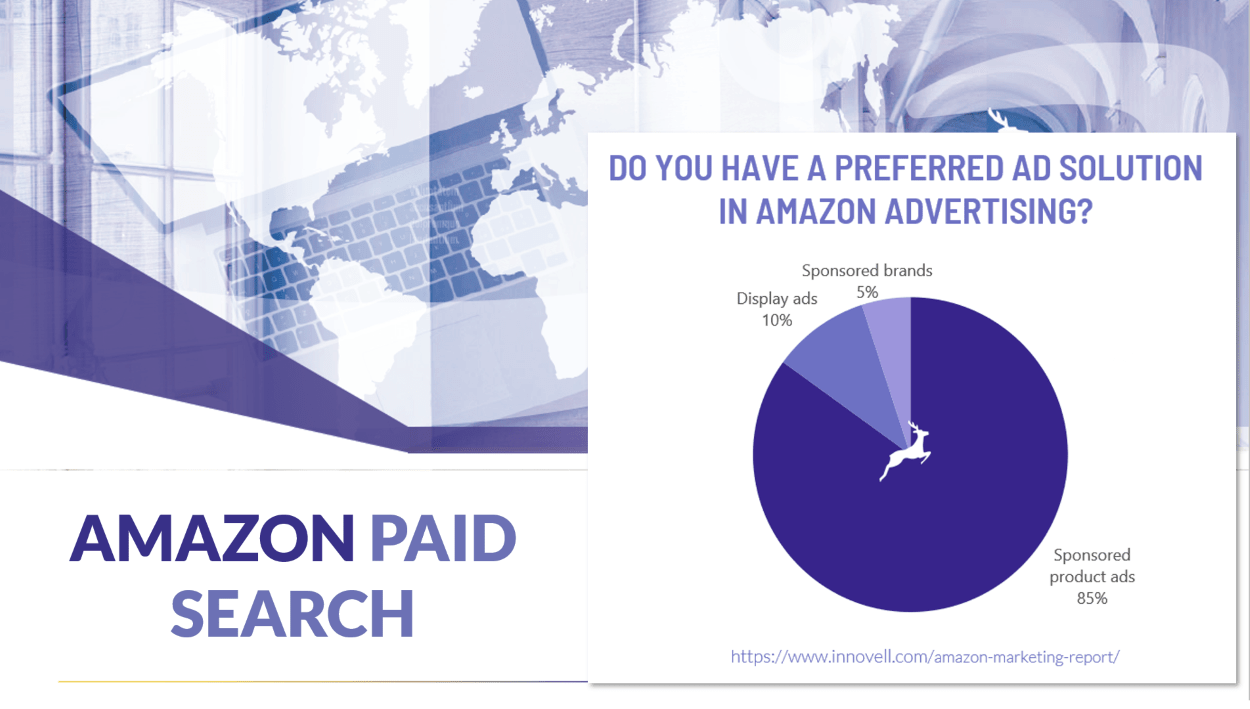
Paid search was the advertising solution which made possible the Google we know today. And Amazon has one just like it. An advertising product which is not intrusive, and which consumers, search platforms and marketers all love.
In Amazon, the paid search product is called Sponsored Product Ads, and it is one of the four ad products Amazon advertisers can use. On the Google front, it used to be called AdWords but changed to just Google Ads in a shift to a broader advertising offering focusing less on the keywords and less on search.
What is Amazon search?
We have come to “Google” information, as the brand has become a verb. We haven’t quite come to “Amazon” a product yet, but search behaviour is increasingly seeing a shift in searches for products away from general search engines and into marketplaces, shopping search, and to a very high degree Amazon. People are starting to have a “Prime” reflex, as their membership of the Amazon loyalty program of that name enables them to buy a product fast, seamlessly and at the lowest available price.
Amazon Search is powered by an engine referred to as A9. Some say it has shifted to A10 now, as an update to the algorithm that powers it. It is a search engine which interprets users’ search queries on one hand and indexes product-related information on the other. There is a focus on keywords and product descriptions provided by the merchant, but additional variables affect the search results, including things like reviews and ratings, customer experience and sales velocity. Sales velocity? Yes, the speed at which a product sells – the higher the better.
Similarly to the world of search marketing for Google, Bing and other web search engines, in the case of Amazon, there is also a separation between Amazon SEO and Amazon paid search. Let’s look closer at the latter below.
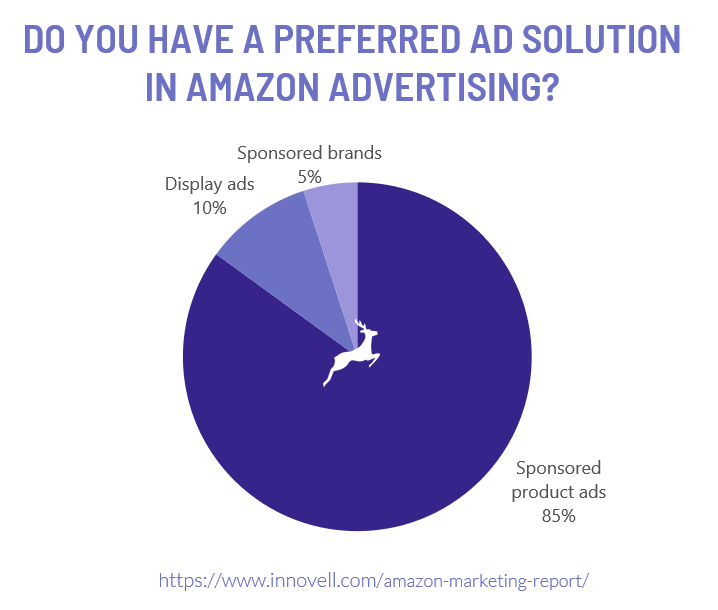
What advertising solutions exist in Amazon?
Amazon Advertising has two branches: Amazon Sponsored Ads which includes three cost per click (CPC) based solutions, and Amazon DSP, the demand side platform offering programmatic media buying inside and outside of the Amazon marketplace, based on a cost per thousand impressions (CPM) payment model.
It is within Amazon Sponsored Ads, that we find Sponsored Product Ads, Amazon’s paid search solution. Its main targeting mechanism is the keyword just like in other search engine advertising. It also allows for product and brand targeting via Amazon’s product codes, the ASINs. In our survey for the Amazon marketing report, 85% of the participating Amazon marketers’ preferred ad solution was Sponsored products.
The other two CPC advertising products in the Amazon market place are called Sponsored Brand and Sponsored Display. They are CPC-based like Sponsored Products but have different placements and different targeting mechanisms. Dive deeper look into the topic here: Amazon advertising characteristics.
7 similarities between Amazon Sponsored Products and AdWords
Amazon Sponsored Product ads have been built into the user experience, just like Google’s AdWords, now renamed to just Google Ads,. When a user searches for information or for a product, the ad appears prominently and close to organic search results. It even looks like an organic result. This is the case for both Amazon’s and Google’s search advertising. Let’s look at the seven dimensions in which the two ad products are similar.
- Pay per click: The orginal search advertising product from GoTo was the first search advertising solution to use the click as its’ main metric. Most search advertising is “pay per click”, or rather “cost per click”, abbreviated as CPC, meaning simply that the advertiser does not pay for exposure or ad impressions, but only pays when a user clicks on the ad.
- Real-time auction: In most digital advertising, the impression of the ad is decided in real-time and on the basis of an auction between advertisers targeting one specific ad placement. The highest ranking bid wins the auction. In Google and Amazon, the rank of the bid is not exclusively based on the price the advertiser is willing to pay. It also carries an element of user experience optimization, such as the Quality Score in Google Ads and available product inventory in Amazon.
- Keyword: The keyword is the basic targeting mechanism for all search advertising. One of the functions of the advertising engine is to match the targeted keyword with the real search terms used by users.
- Match type: In order to match keywords with advertiser targeting, advertising engines use four basic matching mechanisms: Exact match, Phrase match, Broad match and Negative match. These match types are available in Amazon Sponsored Products but have evolved towards less transparent versions in Google Ads and Bing Ads.
- Native ad format: Whereas ads in Amazon search are nowhere similar to ads in other search engine, they carry a ressemblance with organic results. When ads closely integrate with organic results or content, the word “native” is used to characterize them. Search ads were some of the first native ads to be found in digital advertising. Both Amazon sponsored product ads and Google text ads are very similar to the organic search results above and beneath them.
- Ad placement: Just like the native ad formats, the ad placement of search ads is closely integrated with natural results. The key ad placement for search ads is just above the organic search results. To increase visibility, they are often continued at the bottom of the search restults page.
- Automatic targeting: Amazon search ads may ressemble Google AdWords from the way they worked years ago, but in its automatic targeting features it is much close to the Google Ads of today. Google has an automatic targeting function known as Dynamic Search Ads, where the advertiser submits a URL rather than a list of keywords. Amazon Sponsored Products has an automatic targeting function used by marketers to find relevant keywords for their campaigns.
After this list of similarities between Amazon search ads and paid search in Google and Bing, it is fair to mention that there are of course differences too. One of those differences appears in the way marketers work with the ads.
Search marketers fall into two groups, SEO’s aiming to improve organic rankings, and paid search marketers deploying winning strategies to maximize the outcome of search ads. But in Amazon marketing, those two functions are often merged into one, as paid advertising directly impacts organic outcome. In Amazon, effective paid search can have a positive impact on a products organic visibility as “sales velocity” is a ranking signal for the A9 search engine, and marketers naturally work in both dimensions for optimal outcome.
Amazon Sponsored Products is on an AdWords trajectory
AdWords is what made Google rich. Amazon Sponsored Products is only one of the main growth drivers of Amazon, but it is on a trajectory of success. It is likely the most important advertising product for Amazon, although that information is not disclosed. We do know that marketers love it, that it typically generates higher click through rates than the other ad products, and that it is really easy to use. It has practically become a must if you want to sell on Amazon in 2021.
The key for the continued success of this ad product, and possibly for the successful incursion of Amazon Ads into the digital advertising landscape will be to maintain a great user experience in the search interface when the ads are on, maintaining the triple win for the platform, the advertiser and the end user.
If you are interested in search trends and outlooks for digital marketing, you will find more in-depth analysis in our recent reports: “Major Trends in Paid Search“, “Paid Search Strategies“, “Marketing on Amazon” and “Digital Marketing in Uncertain Times“.


